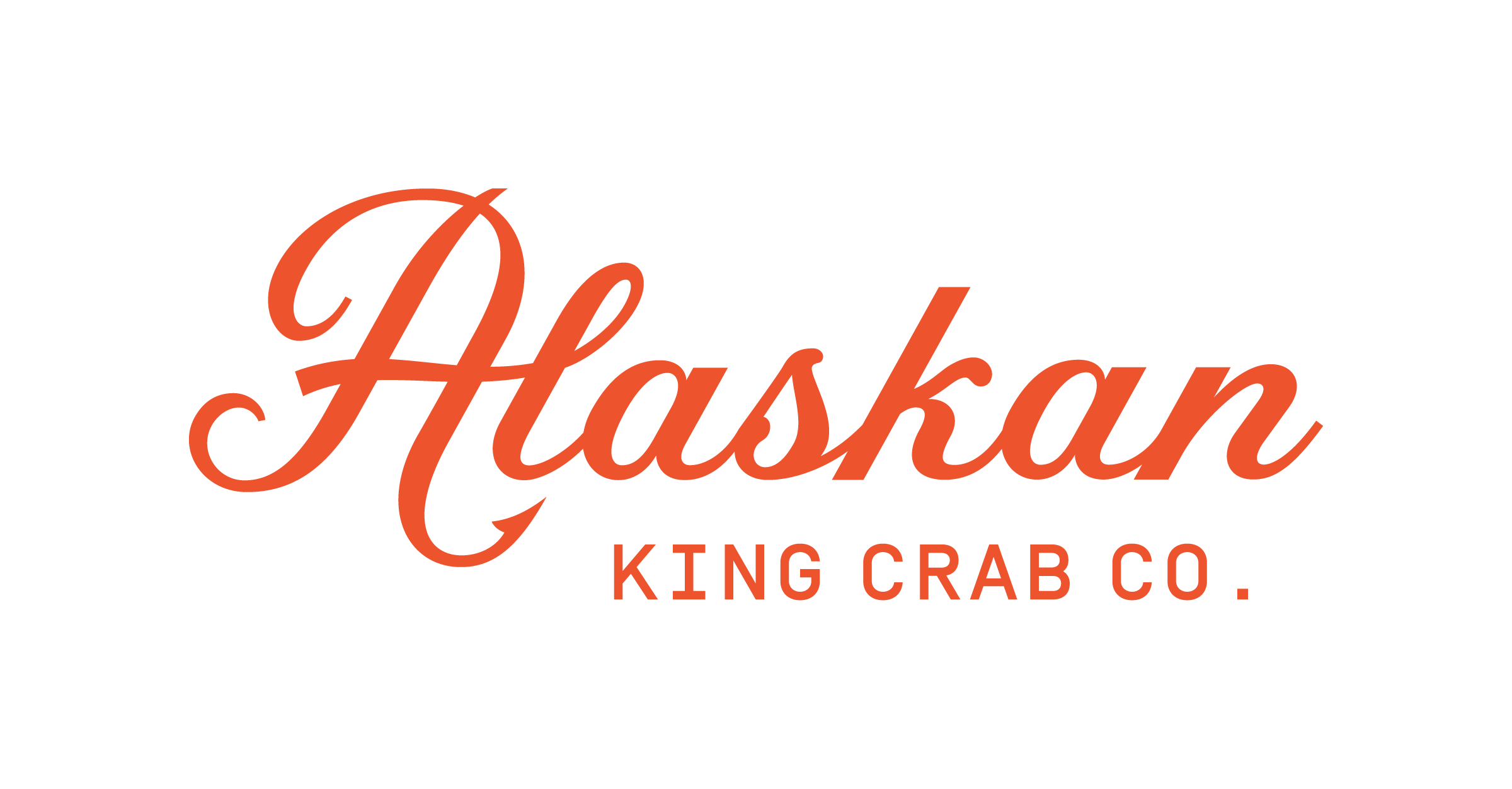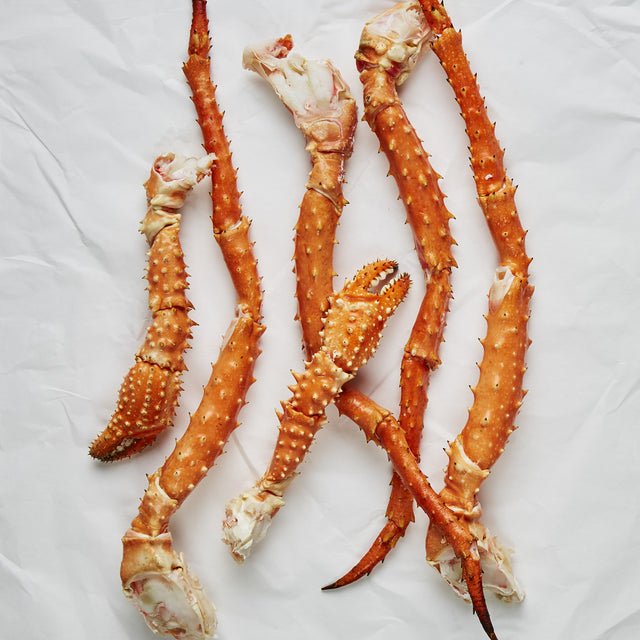Found in the cold waters of regions like the northern pacific, Alaskan king crabs have taken up residence deep on ocean floors. King crabs are crustaceans and belong to the invertebrates group, or those animals without backbones. Considered direct ancestors of the hermit crab, they have a unique abdomen shaped like a fan located below the rear section of their shell. They are also sometimes referred to as stone crabs, or groundfish due to their ocean floor habitat.
Color, Size, and Counts
There are three types of Alaskan king crab and each is defined by its exterior color.
Red king crab (paralithodes camtschaticus), considered the most popular and prized king crab for consumption around the world, has a dark reddish brown shell. They are most abundant off the shores of Alaska.
Blue king crab (paralithodes platypus), with a visibly blue toned shell, live for the most part in the North Pacific Ocean. Blue king crab legs are slender and more oval shaped compared to red king crab legs.
Golden king crab (lithodes aequispinus), has a dark brown shell. The smallest of the three, they weigh an average 5-8 pounds from tip to tip. They’re found from British Columbia to the Aleutian Islands and Japan (http://www.adfg.alaska.gov/).
The average weight of a king crab is 6 to 10 pounds, but some king crab can grow to more than 20 pounds with a leg span of 6 feet across. Though many of those king crabs close to 20 pounds were caught in the early 80s prior to the crash of the Bristol Bay fishery. In order to increase in size, king crabs must "molt" their shell. Juvenile king crabs molt frequently the first years of life and mold less when they reach 4-5 years of age.
King crab is measured by the number of king crab legs it takes to reach 10 lbs of crab meat. A size of 6-9 would translate into “6-9 crab legs add up to 10 pounds.” Only king crab legs make up the count as claws are excluded.
King Crab Anatomy

The anatomy of King crab consists of shoulders, merus, legs, claws, joints, tips, spines and a carapace (or body). Unlike other crabs, king crabs have only six versus eight legs, and two claws. The body, or carapace, section of king crabs is typically sent to canners while the legs are separated and served individually.
Taste and Consumption
The most preferred meat from a king crab is in the legs. Most king crab enthusiasts state that the best section is the merus section, that is, the largest section of the crab leg. Compared to other crabs, the king crab claws are not as notorious as the legs. Red king crab is regarded as the premium of king crab because its meat is the moistest and sweet.
If your crab meat is bluish in color, that indicates either that the crab was under-cooked or wasn't cleaned appropriately. If it’s excessively salty, that’s a sign that the cooked crab wasn’t chilled properly prior to brine freezing.
*Photo courtesy of Alaska Seafood





